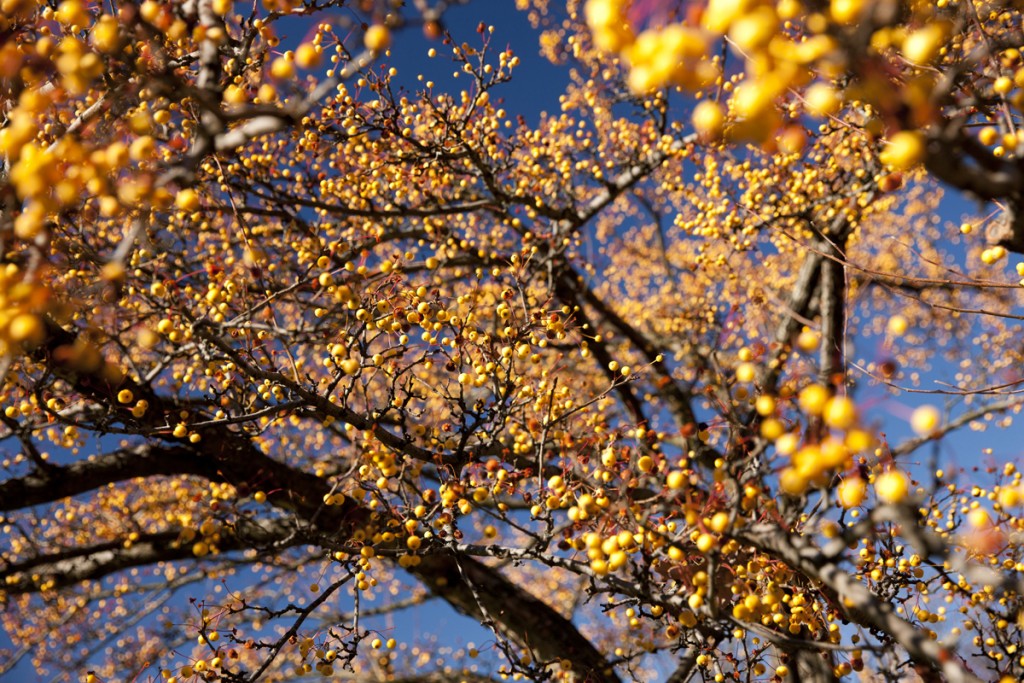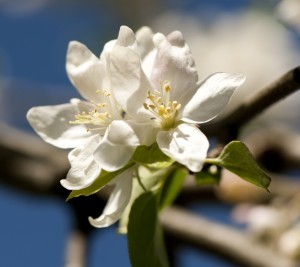Morning Eye Candy: Harvest Gold
Posted in Photography on December 19 2015, by Matt Newman
‘Harvest Gold’ takes its cue from Midas for a spray of late fall color.

Malus ‘Harvest Gold’ in the Crabapple Collection – Photo by Ivo M. Vermeulen

Inside The New York Botanical Garden
Posted in Photography on December 19 2015, by Matt Newman
‘Harvest Gold’ takes its cue from Midas for a spray of late fall color.

Malus ‘Harvest Gold’ in the Crabapple Collection – Photo by Ivo M. Vermeulen
Posted in Photography on May 7 2015, by Lansing Moore
So far, spring at the Garden has starred the magnolias and flowering cherries—but now it’s the crabapples’ turn to hog the spotlight with their rich colors.
Malus ‘Burgandy’ near the Hudson Garden Grill – Photo by Ivo M. Vermeulen
Posted in Photography on May 4 2014, by Matt Newman
Who else but the crabapples can stand up to the cherries’ firecracker brilliance?
Malus ‘Strawberry Parfait’ in the Donald J. Bruckmann Crabapple Collection– Photo by Ivo M. Vermeulen
Posted in Around the Garden, Photography on April 22 2012, by Matt Newman
The ‘Red Jade’ crabapple: living up to a very different name in spring.
Malus ‘Red Jade’ — Photo by Ivo M. Vermeulen
Posted in Around the Garden, Gardens and Collections on April 13 2012, by Matt Newman
 I remember my dad telling me, rather gleefully, of fall afternoons spent pelting his friends with rock-hard crabapples flung from his homemade slingshot. It’s a Dennis the Menace trope in its purest form. But it also seems a fitting use for a fruit some say is named for its disagreeable nature. And if you were to take the dive and snack on a crabapple off the branch, with few exceptions you would probably find yourself cringing as if you’d just sampled a wedge of unripe lemon.
I remember my dad telling me, rather gleefully, of fall afternoons spent pelting his friends with rock-hard crabapples flung from his homemade slingshot. It’s a Dennis the Menace trope in its purest form. But it also seems a fitting use for a fruit some say is named for its disagreeable nature. And if you were to take the dive and snack on a crabapple off the branch, with few exceptions you would probably find yourself cringing as if you’d just sampled a wedge of unripe lemon.
With the cherry trees doffing their hats until next year’s flower effusion, the questionably edible crabapples are only too willing to steal away the spotlight with looks (and being in the rose family, the crabapples have them in spades). The crabby name belies the abundance of blossoms which spot the grounds with cloudy displays of ivory, fuchsia, and burgundy. And the history of crabapples at The New York Botanical Garden is equally as rich, beginning early in the Garden’s life with a planting of trees near Twin Lakes. Later, in 1930, the collection moved to its current home in the southwest section of the grounds. Placed in neat rows along Daffodil Hill, the many cultivars–rare and common alike–burst into effervescent color just after the daffodils have faded. This year’s bizarrely early spring has, of course, given us the benefit of both beauties sashaying through flirty florescence in tandem.